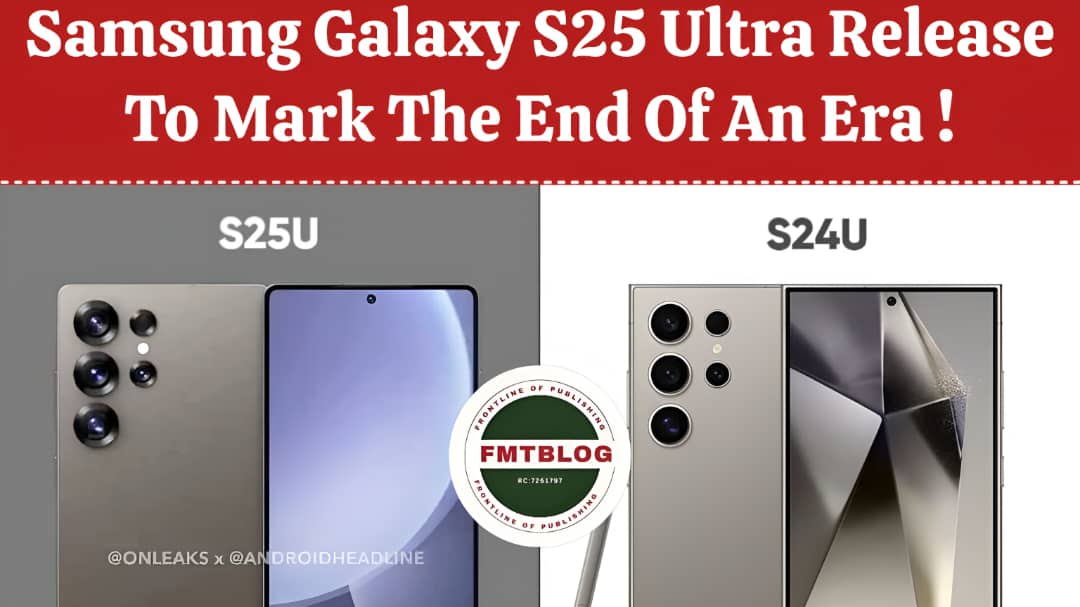
In just a few months, the highly anticipated Samsung Galaxy S25 Ultra will make its debut, marking the end of an era and the beginning of a new one. It’s a departure from the iPhone design, yet it brings us closer to it, sparking excitement among tech enthusiasts and potential smartphone buyers.
 (Image source: AndroidHeadlines, Samsung) Samsung Galaxy S25 Ultra and Galaxy S24 Ultra
(Image source: AndroidHeadlines, Samsung) Samsung Galaxy S25 Ultra and Galaxy S24 Ultra
Let’s delve into the intriguing world of the ‘Curve.’
Samsung was the first manufacturer to launch curved edge screens on smartphones. The firm embraced this display as an innovative technology to create something different. Galaxy S and Note phones from 2015-2018 featured curved displays.
 (Credit: Androidheadlines) Samsung Galaxy S25 Ultra CAD Render
(Credit: Androidheadlines) Samsung Galaxy S25 Ultra CAD Render
The unconventional display style has since gained popularity with customers. But, in past flagships, it’s not only the frame.
These were sold with a curved/rounded body, arcing from the rear to the front. This construction offers a firmer grip on devices and a cleaner look.
This was certain
However, the transition that followed was not abrupt but rather a gradual evolution. This brings us to the S9 and S10+, two models that serve as the pivot point for our discussion.
Samsung’s flagships, the Galaxy S9 and Note 9, have the broadest curved edges. That display aspect was very prominent, and the same can be said of the Galaxy S10+, but not for this reason.
Its display curves fell nearly 30-40% at the same time as the frame. These curves then continue to shrink both for display and for the current frame.
Another thing that went on was that Samsung stopped the Note line and incorporated its functionality in the S flagship along with the S-Pen.
S24 Ultra: The Ending Touchstone
More recently, the Galaxy S24 Ultra launched a flat screen, the last leg in the flat-device race.
As with Ultra, the standard models already had a new design and a new frame. While the S24 Ultra had a curved body, unlike these two handsets, the message was laid out for the next model.
S25 Ultra: Rounding the Circle
A month ago, OnLeaks partnered with Android Headlines to release the Galaxy S25 Ultra’s first CAD renders. These photos have opened up an entirely new era for the Ultra and the entire S series lineup.
Samsung introduced titanium in the S24 Ultra, but it still looks the same. This fabric has been applied to the S25 Ultra flat with no curves at either end.
The back, front, and body create an overall flat phone experience similar to the s24 (base and).
This redesign also gets rid of those apparent sharp edges. Instead, S25U has buffed every corner. It makes us think of the iPhone, but there’s another way to consider it.
Both current and older Ultra models have slim bezels, but its elliptical shape totally removed this feature from the frame. This basically means that the radius (curve) of the frame acts as an extra bezel outside the screen.
Its flat design makes the phone slim along its corners and edges. This switch will emphasise the low bezels and high resolution. The company has already tried this on the S24 and S24 Plus, and people like it.
Samsung Galaxy S25 Ultra Release
Samsung took this curve era by storm years ago, and the S24 Ultra nailed it. Samsung is about to make the switch from a flip phone to a flat-screen flagship with the S25 Ultra, and we could be seeing this shift in action by the time the phone hits stores next year.
VIA



